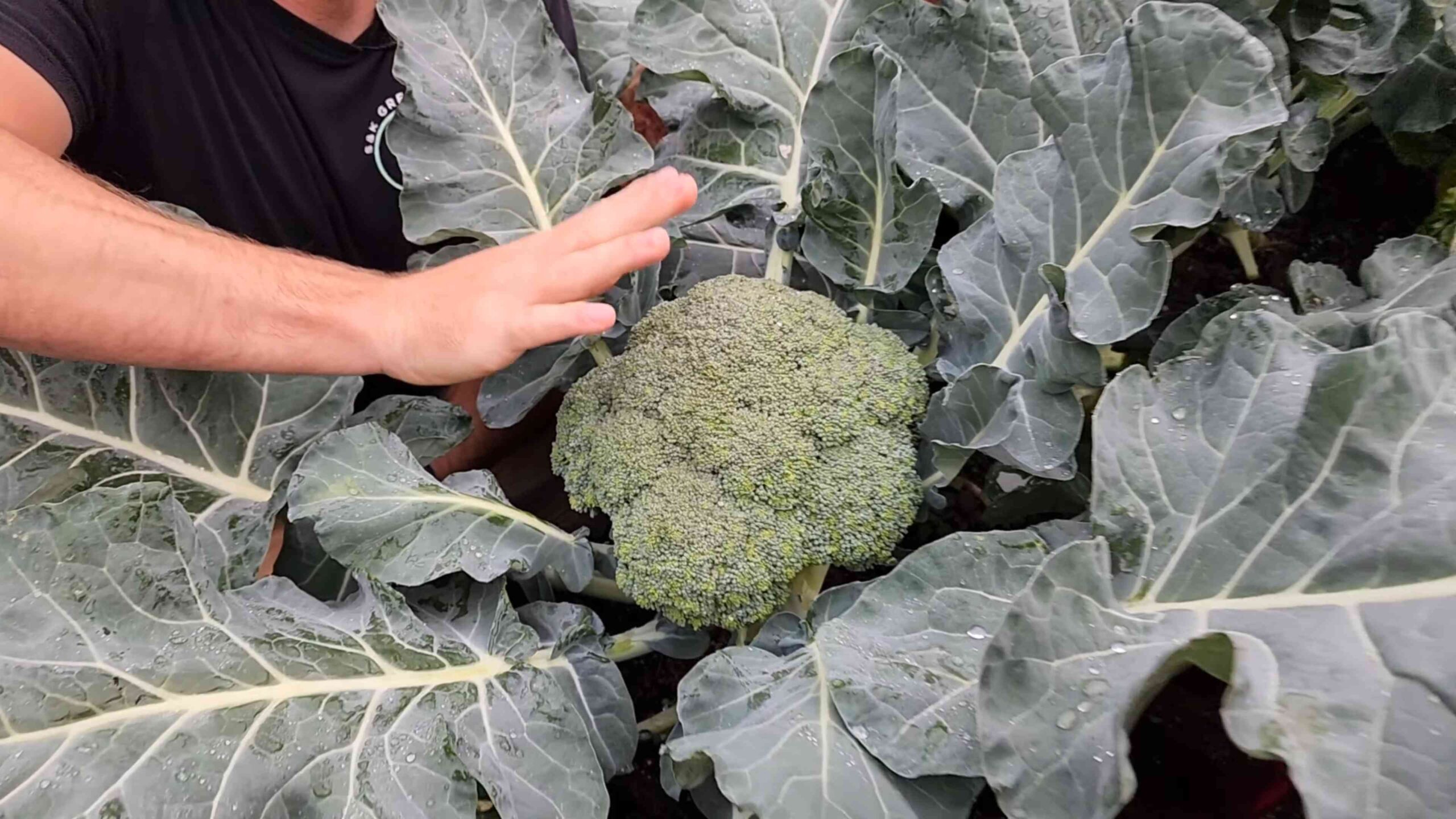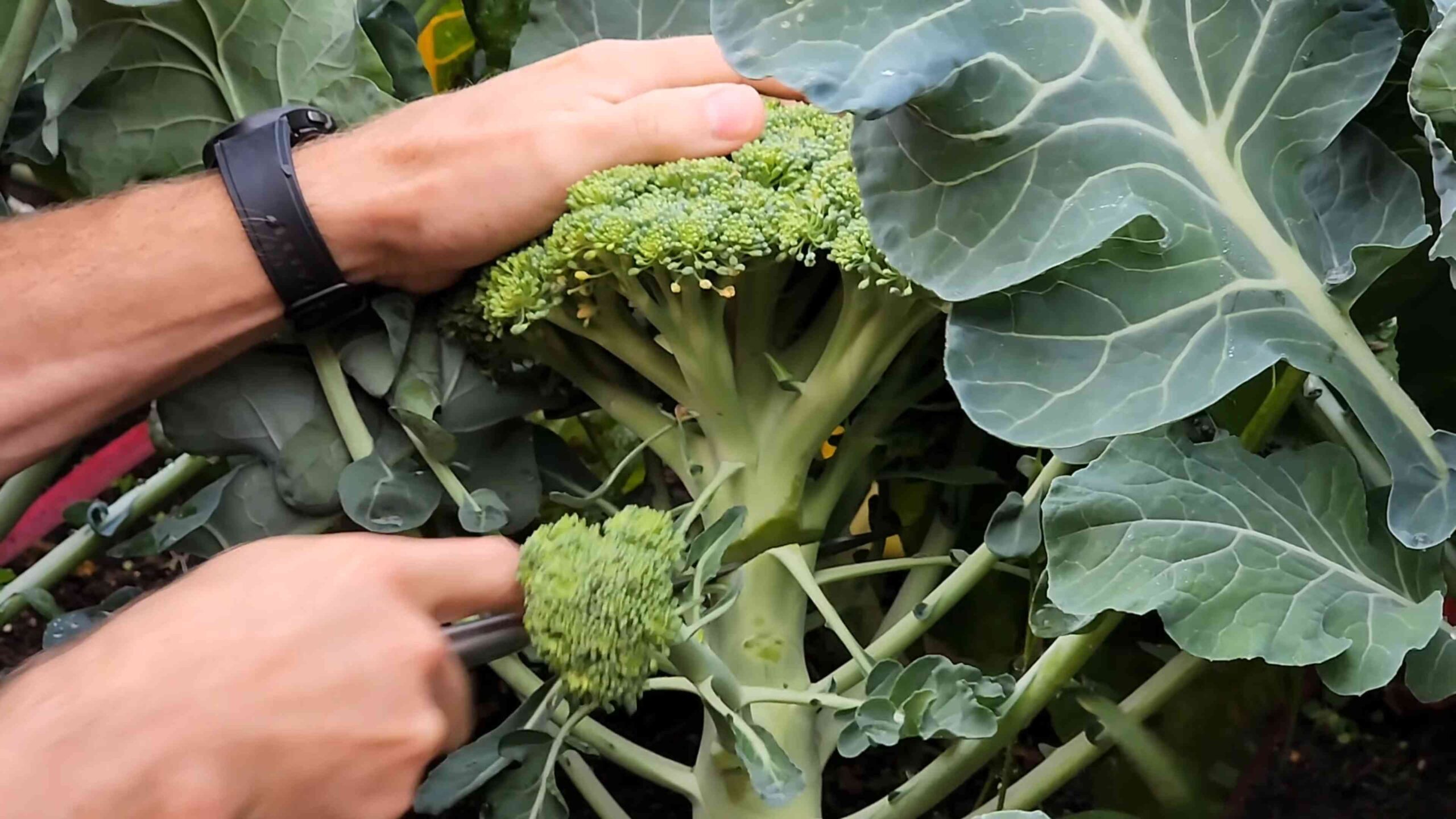Grow Broccoli at Home – and unlock the secrets to fresh, delicious, and affordable homegrown goodness! Have you ever dreamt of strolling into your backyard and harvesting vibrant, green broccoli heads for dinner? It’s more attainable than you think, and this DIY guide is your key to making that dream a reality. For centuries, cultivating your own food has been a cornerstone of self-sufficiency and a connection to nature. From ancient Roman gardens to the victory gardens of wartime, growing your own vegetables has always been a rewarding endeavor.
But why grow broccoli at home now? In today’s world, where grocery store produce can be expensive and lack flavor, the ability to harvest your own fresh, organic broccoli is invaluable. Plus, you’ll know exactly what went into growing it – no harmful pesticides or mystery ingredients! This DIY article is packed with simple, effective tricks and hacks that will empower even the most novice gardener to successfully cultivate this nutritious and delicious vegetable. I’m excited to share my favorite tips and techniques with you, so let’s get started on your broccoli-growing adventure!

Grow Your Own Broccoli: A Beginner’s Guide
Hey there, fellow gardening enthusiasts! I’m so excited to share my experience with growing broccoli at home. It’s surprisingly rewarding, and nothing beats the taste of fresh, homegrown broccoli. Don’t be intimidated – even if you’re a complete beginner, you can totally do this! I’ll walk you through every step, from choosing the right variety to harvesting your delicious bounty.
Choosing the Right Broccoli Variety
First things first, let’s talk broccoli varieties. There are tons to choose from, and the best one for you will depend on your climate and personal preferences. Here are a few popular options:
* Calabrese: This is your classic broccoli, producing a large central head followed by smaller side shoots. It’s a reliable choice for most gardeners.
* Waltham 29: Another great all-around variety, known for its heat tolerance and good flavor.
* DiCicco: This variety matures quickly and produces smaller heads, making it ideal for smaller gardens or succession planting.
* Romanesco: If you’re feeling adventurous, try Romanesco! It’s a visually stunning variety with a unique, fractal-like head. The taste is mild and nutty.
* Broccolini: Technically a hybrid of broccoli and Chinese kale, Broccolini produces long, slender stalks with small florets. It’s tender and delicious.
I personally love growing Calabrese because it’s so reliable and produces a good yield. But feel free to experiment and find your favorite!
Starting Your Broccoli Seeds
You have two options here: starting your seeds indoors or direct sowing them in your garden. I prefer starting indoors because it gives the seedlings a head start and protects them from pests and harsh weather.
* Indoor Starting (Recommended):
* Timing: Start seeds about 6-8 weeks before the last expected frost in your area.
* Materials: You’ll need seed starting trays or small pots, seed starting mix, a spray bottle, and a grow light (optional, but highly recommended).
* Process:
1. Fill your seed starting trays or pots with seed starting mix. Gently firm the soil.
2. Sow 2-3 seeds per cell or pot, about ¼ inch deep.
3. Water gently with a spray bottle to moisten the soil.
4. Cover the trays or pots with a clear plastic dome or plastic wrap to create a humid environment.
5. Place the trays or pots in a warm location (around 70-75°F).
6. Once the seeds germinate (usually within 5-10 days), remove the plastic cover and place the seedlings under a grow light or in a sunny window.
7. Water regularly, keeping the soil moist but not soggy.
8. Thin the seedlings to one per cell or pot once they have a few true leaves.
9. Harden off the seedlings by gradually exposing them to outdoor conditions for a week before transplanting.
* Direct Sowing (Less Recommended):
* Timing: Sow seeds directly in the garden 2-3 weeks before the last expected frost.
* Preparation: Prepare the soil by amending it with compost or well-rotted manure.
* Process:
1. Sow seeds about ½ inch deep and 18-24 inches apart.
2. Water gently to moisten the soil.
3. Keep the soil consistently moist until the seedlings emerge.
4. Thin the seedlings to one per plant once they have a few true leaves.
I find that starting indoors gives me much better results, but direct sowing can work if you live in a mild climate and have good soil.
Transplanting Your Broccoli Seedlings
Once your seedlings are about 4-6 inches tall and have several true leaves, it’s time to transplant them into your garden.
* Choosing the Right Location: Broccoli needs at least 6 hours of sunlight per day. Choose a location with well-drained soil that is rich in organic matter.
* Preparing the Soil: Amend the soil with compost or well-rotted manure to improve drainage and fertility. Broccoli is a heavy feeder, so it needs plenty of nutrients. I also like to add a slow-release fertilizer at this stage.
* Transplanting:
1. Dig holes that are slightly larger than the root balls of your seedlings, spacing them 18-24 inches apart.
2. Gently remove the seedlings from their trays or pots.
3. Place the seedlings in the holes, making sure the top of the root ball is level with the soil surface.
4. Fill in the holes with soil and gently firm around the base of the plants.
5. Water thoroughly.
6. Mulch around the plants with straw or wood chips to help retain moisture and suppress weeds.
I always transplant on a cloudy day or in the late afternoon to minimize stress on the seedlings.
Caring for Your Broccoli Plants
Now that your broccoli plants are in the ground, it’s time to give them some TLC.
* Watering: Broccoli needs consistent moisture, especially during head formation. Water deeply and regularly, especially during dry spells. Aim for about 1-1.5 inches of water per week. I use a soaker hose to water my broccoli plants, which helps to deliver water directly to the roots and minimize water loss through evaporation.
* Fertilizing: Broccoli is a heavy feeder, so it needs regular fertilization. Side-dress your plants with a nitrogen-rich fertilizer every 2-3 weeks. You can use a commercial fertilizer or an organic option like compost tea or fish emulsion.
* Weeding: Keep the area around your broccoli plants free of weeds. Weeds compete with your broccoli for water and nutrients. Hand-pull weeds regularly or use a hoe to cultivate the soil.
* Pest Control: Broccoli is susceptible to several pests, including cabbage worms, aphids, and flea beetles.
* Cabbage Worms: These green caterpillars can quickly decimate your broccoli plants. Hand-pick them off the plants or use Bacillus thuringiensis (Bt), a natural insecticide that is effective against caterpillars.
* Aphids: These tiny insects suck the sap from plants, causing them to weaken and become distorted. Spray aphids with a strong stream of water or use insecticidal soap.
* Flea Beetles: These small, jumping beetles can create tiny holes in the leaves of your broccoli plants. Cover your plants with row covers to prevent flea beetles from reaching them. You can also use diatomaceous earth, a natural insecticide that is effective against flea beetles.
* Disease Control: Broccoli can also be affected by several diseases, including clubroot and black rot.
* Clubroot: This soilborne disease causes the roots of plants to become swollen and distorted. Prevent clubroot by rotating your crops and amending the soil with lime to raise the pH.
* Black Rot: This bacterial disease causes yellow or brown lesions on the leaves of plants. Prevent black rot by using disease-free seeds and avoiding overhead watering.
I always inspect my broccoli plants regularly for pests and diseases. The sooner you catch a problem, the easier it will be to control.
Harvesting Your Broccoli
The moment you’ve been waiting for! Harvesting your broccoli is the most rewarding part of the process.
* Timing: Harvest your broccoli when the head is firm and the florets are tightly closed. If the florets start to open and turn yellow, it’s time to harvest immediately.
* Method: Use a sharp knife to cut the main head of broccoli from the plant, leaving several inches of stem.
* Side Shoots: After you harvest the main head, the plant will produce smaller side shoots. You can harvest these as they mature.
* Storage: Store your harvested broccoli in the refrigerator for up to a week.
I love to steam, roast, or stir-fry my homegrown broccoli. It’s also delicious raw in salads or with dip.
Troubleshooting
Even with the best care, you might encounter some problems while growing broccoli. Here are a few common issues and how to address them:
* Small Heads: This can be caused by insufficient sunlight, poor soil, or lack of nutrients. Make sure your broccoli plants are getting at least 6 hours of sunlight per day, amend the soil with compost or well-rotted manure, and fertilize regularly.
* Bolting: Bolting is when the plant prematurely flowers. This can be caused by hot weather or stress. Choose heat-tolerant varieties and provide your plants with consistent moisture.
* Yellowing Leaves: This can be caused by nutrient deficiencies, pests, or diseases. Inspect your plants for pests and diseases and fertilize regularly.
Don’t be discouraged if you encounter problems. Gardening is a learning process, and every season is a new opportunity

Conclusion
So, there you have it! Growing broccoli at home isn’t just a gardening project; it’s a gateway to fresher, more flavorful meals and a deeper connection with the food you eat. We’ve walked through the essential steps, from seed selection to harvesting those beautiful, nutrient-packed heads. The satisfaction of nurturing a plant from a tiny seed to a bountiful harvest is truly rewarding.
Why is this DIY trick a must-try? Because it puts you in control. You know exactly what goes into your broccoli – no mystery pesticides or long-distance transportation. You get to enjoy broccoli at its peak freshness, bursting with flavor and vitamins. Plus, it’s a fantastic way to reduce your carbon footprint and support sustainable living.
But the journey doesn’t end here! Feel free to experiment with different varieties of broccoli. Try growing Romanesco broccoli for its stunning fractal patterns or sprouting broccoli for a continuous harvest of tender shoots. Consider companion planting to deter pests naturally – marigolds and nasturtiums are excellent choices. You can also explore different soil amendments to optimize growth, such as adding compost or bone meal.
Don’t be afraid to get your hands dirty and learn from your experiences. Gardening is a continuous learning process, and every season brings new challenges and opportunities. Embrace the imperfections, celebrate the successes, and most importantly, enjoy the process.
We wholeheartedly encourage you to try growing broccoli at home. It’s an investment in your health, your well-being, and the environment. And once you’ve tasted the difference between homegrown and store-bought broccoli, you’ll never look back.
We’d love to hear about your experiences! Share your photos, tips, and challenges in the comments below. Let’s build a community of home gardeners and inspire each other to grow our own food. Happy gardening! Let us know how your **grow broccoli at home** project goes!
Frequently Asked Questions (FAQs)
Q: How much space do I need to grow broccoli?
A: Broccoli plants need adequate space to thrive. Ideally, you should space them about 18-24 inches apart in rows that are 2-3 feet apart. This allows for proper air circulation and sunlight penetration, which are crucial for healthy growth. If you’re growing in containers, choose pots that are at least 12 inches in diameter and depth to accommodate the plant’s root system. Even a small balcony or patio can accommodate a few broccoli plants in containers. Remember to consider the mature size of the variety you’re growing when determining spacing.
Q: What kind of soil is best for growing broccoli?
A: Broccoli thrives in well-draining, fertile soil that is rich in organic matter. The ideal soil pH is between 6.0 and 7.0. Before planting, amend your soil with compost, aged manure, or other organic materials to improve its structure and nutrient content. If your soil is heavy clay, consider adding sand or perlite to improve drainage. You can also perform a soil test to determine its pH and nutrient levels and adjust accordingly. A balanced fertilizer, such as a 10-10-10, can also be incorporated into the soil at planting time.
Q: How often should I water my broccoli plants?
A: Broccoli plants need consistent moisture, especially during hot weather. Water deeply and regularly, aiming to keep the soil consistently moist but not waterlogged. Check the soil moisture by sticking your finger about an inch deep – if it feels dry, it’s time to water. Avoid overhead watering, as this can lead to fungal diseases. Instead, water at the base of the plants. Mulching around the plants can help retain moisture and suppress weeds. During periods of heavy rain, you may need to reduce watering frequency.
Q: What are some common pests and diseases that affect broccoli, and how can I control them?
A: Broccoli is susceptible to several pests and diseases, including cabbage worms, aphids, flea beetles, and clubroot. To control cabbage worms, handpick them off the plants or use Bacillus thuringiensis (Bt), a natural insecticide. Aphids can be controlled with insecticidal soap or a strong spray of water. Flea beetles can be deterred with row covers or diatomaceous earth. Clubroot is a soilborne disease that can be prevented by practicing crop rotation and maintaining a soil pH above 7.0. Regularly inspect your plants for signs of pests and diseases and take action promptly to prevent them from spreading.
Q: When is the best time to harvest broccoli?
A: Broccoli is ready to harvest when the central head is firm, tight, and a deep green color. The individual florets should be tightly closed. If the florets start to open and turn yellow, it’s a sign that the broccoli is overripe. Use a sharp knife to cut the head from the plant, leaving a few inches of stem. After harvesting the central head, the plant may produce side shoots, which can also be harvested. Harvest broccoli in the morning when the plant is cool and crisp.
Q: Can I grow broccoli in containers?
A: Yes, broccoli can be successfully grown in containers. Choose a container that is at least 12 inches in diameter and depth to provide enough room for the plant’s root system. Use a high-quality potting mix that is well-draining and rich in organic matter. Water regularly and fertilize every few weeks with a balanced fertilizer. Place the container in a sunny location that receives at least 6 hours of sunlight per day. Container-grown broccoli may require more frequent watering and fertilization than broccoli grown in the ground.
Q: How much sunlight does broccoli need?
A: Broccoli needs at least 6 hours of direct sunlight per day to thrive. Choose a planting location that receives full sun for optimal growth and head development. If you live in a hot climate, some afternoon shade may be beneficial to prevent the plants from overheating. If you’re growing broccoli indoors, use grow lights to supplement natural sunlight. Insufficient sunlight can result in leggy plants with small, poorly formed heads.
Q: What are some good companion plants for broccoli?
A: Companion planting can help deter pests, attract beneficial insects, and improve soil health. Some good companion plants for broccoli include:
* Marigolds: Repel nematodes and other pests.
* Nasturtiums: Attract aphids away from broccoli.
* Dill: Attracts beneficial insects like ladybugs and lacewings.
* Onions and garlic: Repel cabbage moths and other pests.
* Rosemary: Deters cabbage moths and flea beetles.
* Chamomile: Attracts beneficial insects and improves soil health.
Avoid planting broccoli near strawberries, tomatoes, or peppers, as they can compete for nutrients or attract similar pests.
Q: Can I freeze broccoli after harvesting?
A: Yes, broccoli can be frozen for later use. To freeze broccoli, wash and cut it into florets. Blanch the florets in boiling water for 3-5 minutes, then immediately transfer them to an ice bath to stop the cooking process. Drain the broccoli well and spread it out on a baking sheet to freeze individually. Once frozen, transfer the florets to a freezer bag or container. Frozen broccoli can be stored for up to 12 months. Blanching helps to preserve the color, texture, and flavor of the broccoli during freezing.





Leave a Comment